Monday Dec 29, 2025
Monday Dec 29, 2025
Wednesday, 17 February 2021 00:00 - - {{hitsCtrl.values.hits}}
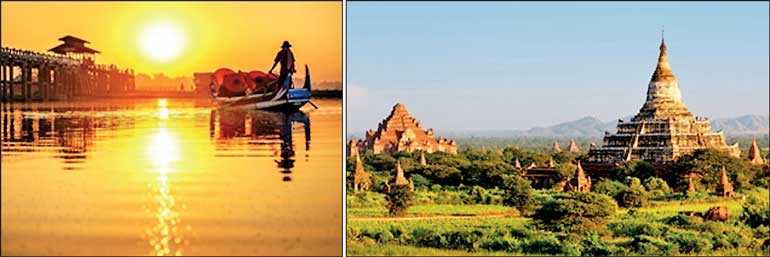
There are many tourist-interest places in Myanmar
By Dr. Sham Choughule
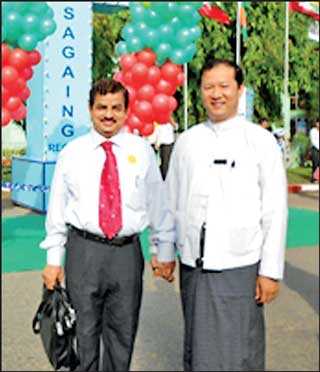 |
| Many Army Officers resigned from the military and become civilians in one night. Such military officers again came back to power after election. Dr. Sham Choughule along with Chief Minister of Sagaing (Ex-Military Officers) in Regional Business and Investment Conclave, Monwya Myanmar (28-29 May 2013)
|
Political background
Myanmar is a country of 54 million people in South East Asia which shares borders with Bangladesh, India, China, Thailand and Laos. It was ruled by an oppressive military government from 1962 to 2011, either directly or indirectly, leading to international condemnation and sanctions.
Aung San Suu Kyi spent years campaigning for democratic reforms. A gradual liberalisation began in 2010, though the military still retained considerable influence.
Back door entry of military
The military has designed the constitution. As per this constitution, there was 25% seat in the parliament. Many military officers resigned from their military service and became civilians. Such a civilian contested the general election 2011 and came back in the parliament. In this way, more than 75% of military officers become members of parliament. A government led by Suu Kyi came to power after free elections in 2015.
After five years, there was another election in November 2020. The Suu Kyi-led National League for Democracy owned 396 seats out of 476 and got absolute majority over military rule. But there was a military coup on 31 January 2021 before a new session of the parliament. Now Aung San Suu Kyi has been arrested on 1 February morning. Myanmar’s military has seized power after detaining Aung San Suu Kyi and other democratically elected leaders. Now once again, Myanmar is under military rule and deprived of the economic development of the country.
Structure of the economy
Myanmar is lagging behind other countries because of this military rule and sanctions from the USA and EU. But on the economic front, Myanmar was developing with the help of other countries from 2010 till now. Myanmar had opened its door for foreign investors in various sectors and was getting FDI.
Myanmar experienced rapid growth as it opened up in the 2010s, with GDP growth rates among the highest in Asia. However, growth had already been slowing when the coronavirus shock hit in early 2020. Myanmar’s GDP stood at almost $ 87 billion in the year 2019. Myanmar’s contribution to the GDP is 2.9% of the ASEAN countries (Refer Figure 1).
According to the International Monetary Fund, Myanmar’s economy may grow 6.75% this fiscal year, driven by natural gas sales and investment. Energy and mining together is the fourth-biggest contributor to Myanmar’s gross domestic product, with agriculture being the largest at $ 21.2 billion. Infrastructure spending was second at $ 10.5 billion and manufacturing third with $ 9.8 billion (Refer Figure 2).
According to global management consulting firm McKinsey, “Managed well, Myanmar could conceivably quadruple the size of its economy, from $ 45 billion in 2010 to more than $ 200 billion in 2030.” It projected GDP growth of 5.9% in FY 2021 and forecast is 6.8% in FY 2022.
The problems in agriculture
There is no proper land utilisation and also no big dam for irrigation. The 70% population depends upon the agriculture sector. The farmers are not using tractors and traditionally do agriculture. Therefore, there are opportunities to invest in irrigation, equipment for pre- and post-harvest activities, and warehouses for storage for food grain. Supplying tractors and plough are also useful for agriculture. There is a need for establishing an agro-based industry. Myanmar requires industrialisation in the agriculture sector to boost its economy.
Scope for mining
Myanmar is full of natural resources with gas, copper and other minerals. Myanmar has gold deposits across the country. But these natural resources are not fully explored. Myanmar’s untapped economic potential makes it an attractive destination for other countries.
There are some port and shipping activities in the service sector. Transport and communications are very weak. Roads are in bad conditions. There is little banking network in the country. Foreign banks are not allowed in Myanmar. Therefore, there is no liquidity and cash flow which is required for the agriculture, trade and industry.
There are no big factories or refineries. Only small companies like rice mills, and wooden factories. The industry is based on the SME sector. There are no functional special economic zones.
The role of the Asian Development Bank
The Asian Development Bank and IMF encouraged Myanmar to carry out its reform. Such reforms help to remove poverty and to encourage the development of the country.
Foreign trade
Myanmar does not have a trade link with developed countries like the USA and Europe.
Myanmar’s 56% trade is with neighbouring under developing countries like Thailand-Laos-Cambodia-Vietnam and India. Myanmar imports 44% from Asian countries. Myanmar’s major trade partner in China.
Myanmar has bilateral trade agreements with China, Korea, Vietnam, Laos, Philippines, Malaysia, Sri Lanka, Israel, Thailand, India and Pakistan. Myanmar also has FTA with China and Hong Kong.
Border trade agreements
Myanmar is connected with its neighbour countries mostly by land route. There are five border trade agreements (Refer Figure 3).
Tourism
There are many tourist-interest places in Myanmar. But there is no openness, or global connectivity by air. This sector of the economy is also unable to grab its market share. Tourism of Myanmar has the potential to develop like Thailand, Malaysia and Cambodia (Refer Figure 4).
Now the USA and New Zealand have imposed sanction on Myanmar on 10 February 2021. Some of the countries have cut off their political relations and closed their embassies in Myanmar. In such conditions, it is difficult for Myanmar to keep track of economic development.
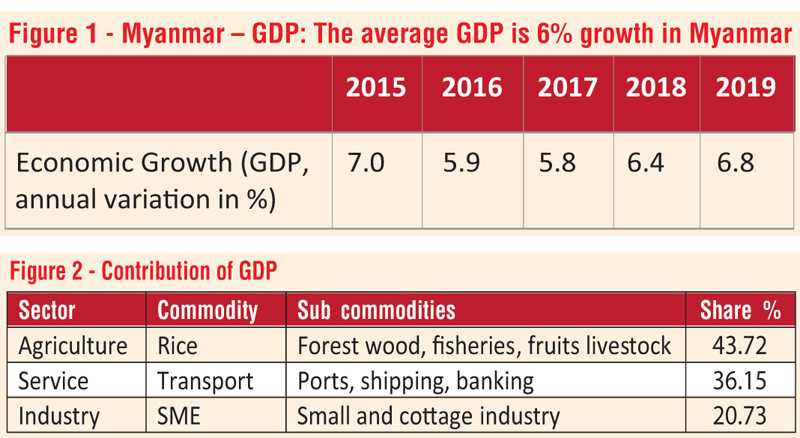
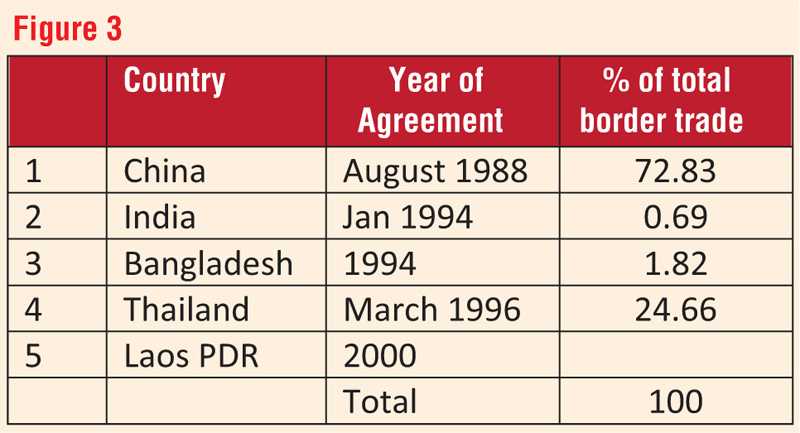
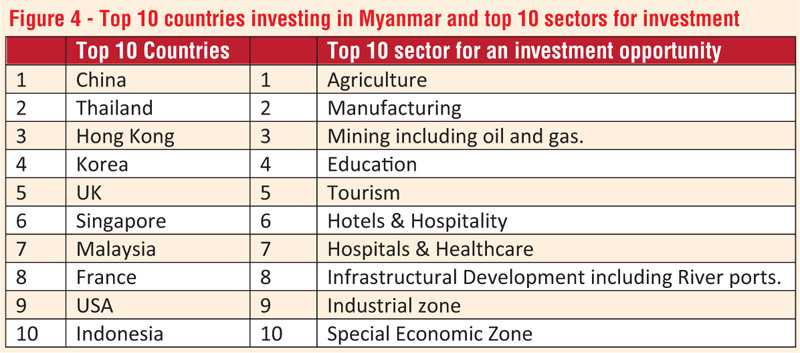
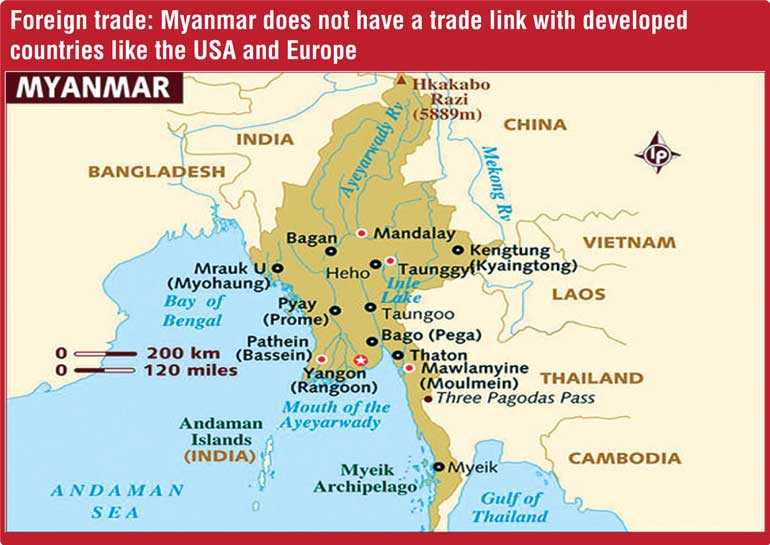
(The writer is Director, Association for Global Economic Development – India. He can be reached via: [email protected].)